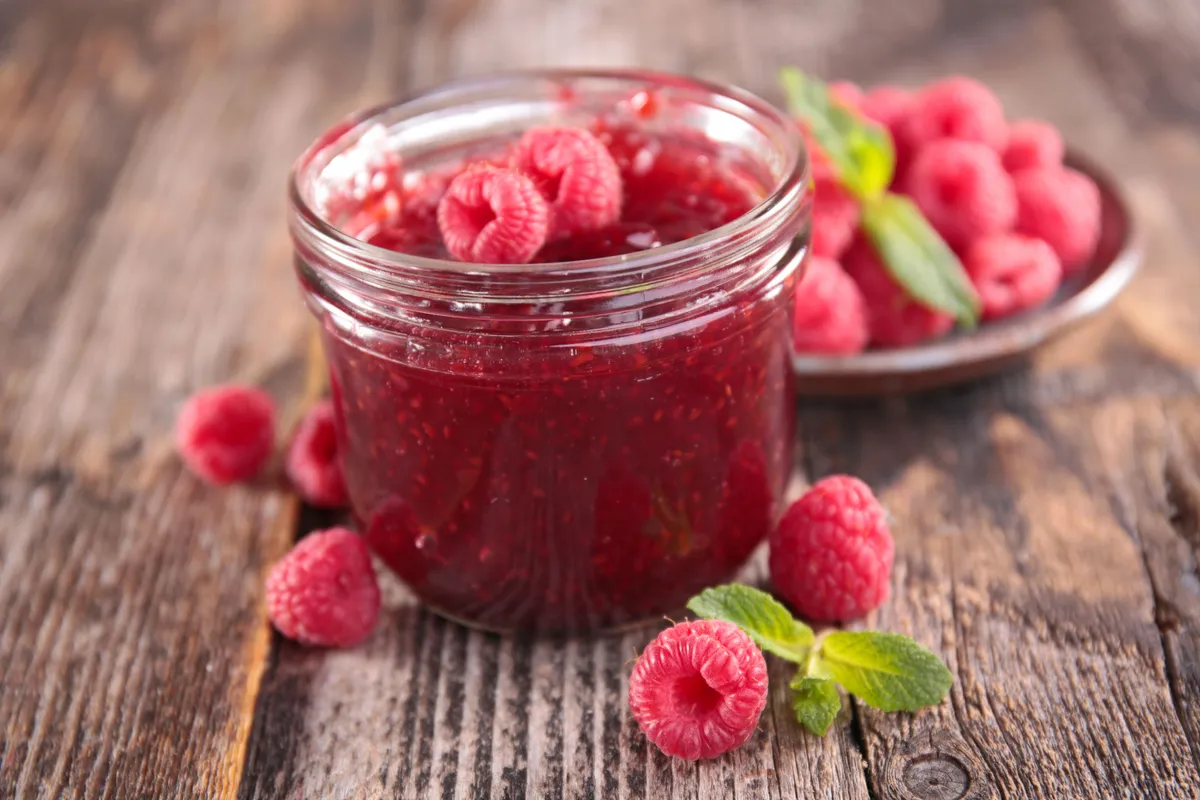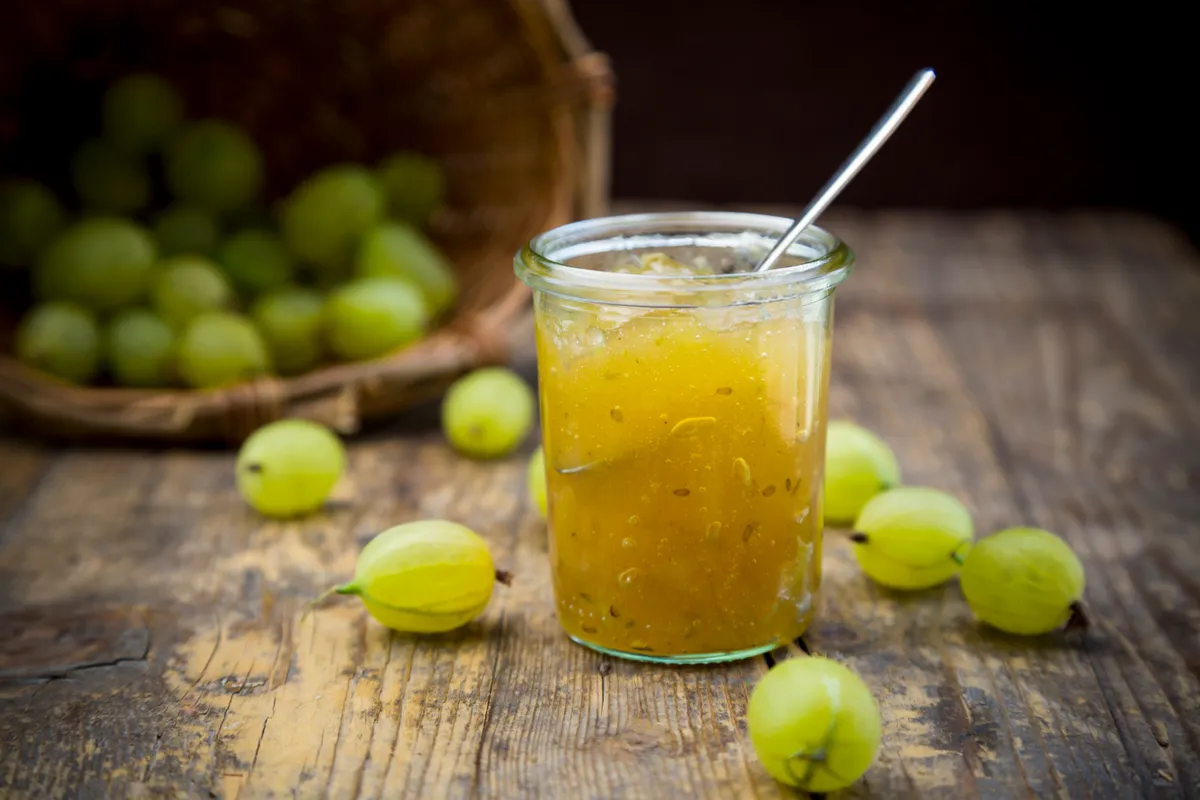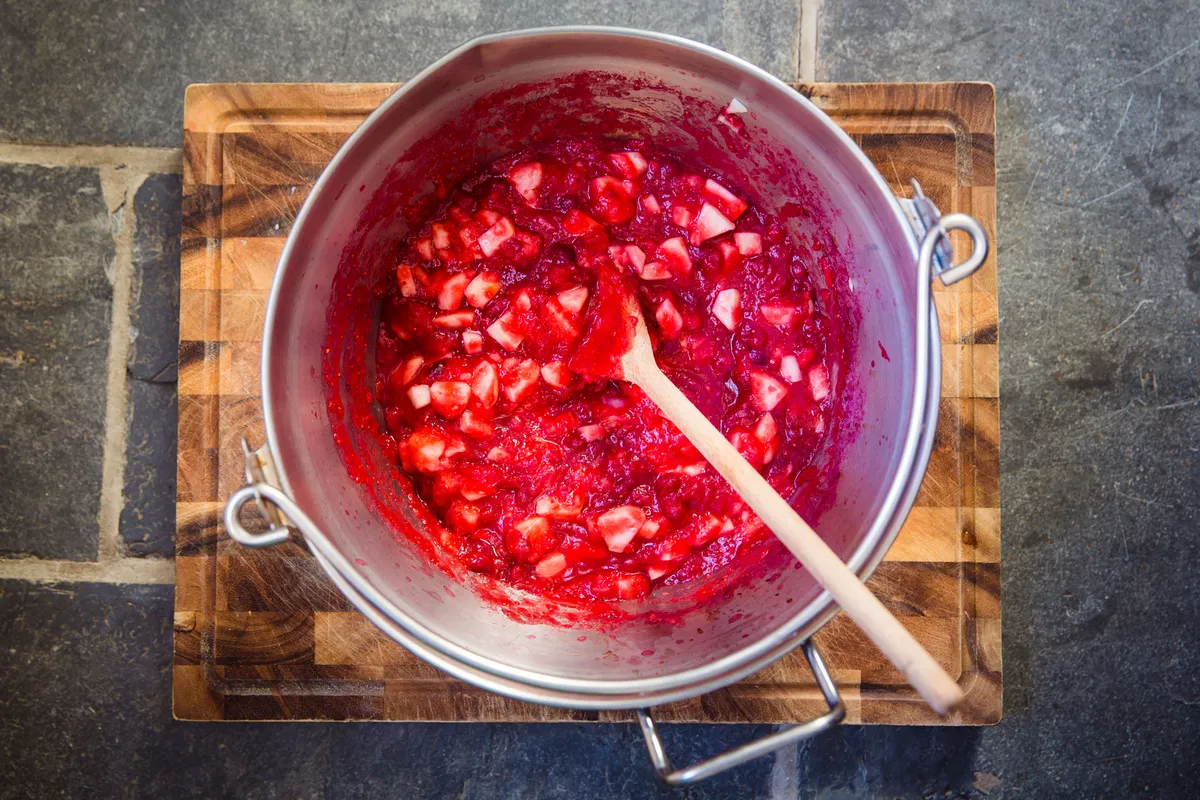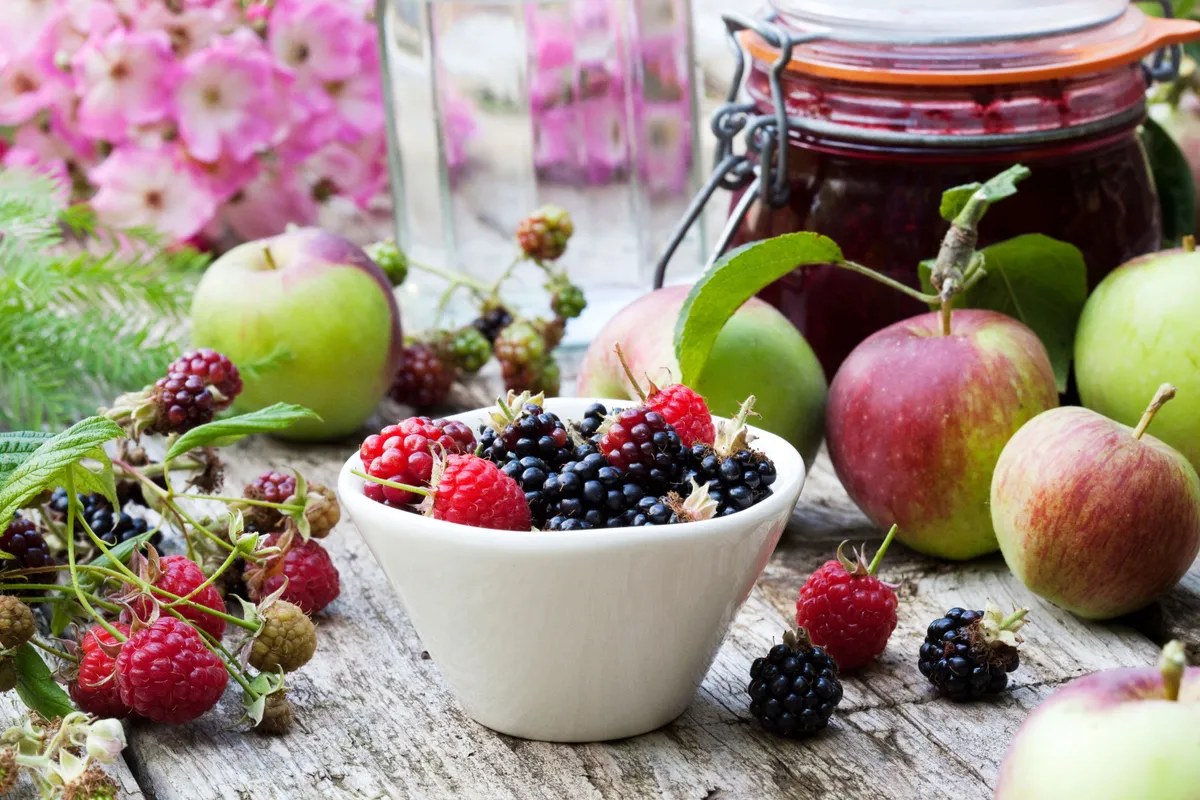Here is our expert jam and preserve making guide, which looks at the revival in home preserving, from chutneys to conserves, and jams to jellies, plus easy recipes to try yourself from expert preserver Pam Corbin, aka Pam the Jam.
Peek into Pam Corbin’s handbag and you’ll almost certainly spot a jar of jam, probably homemade gooseberry, her favourite. “You never know when you might need a pot,” she smiles. Pam the Jam, as her friends call her, has been stirring bubbling cauldrons for as long as she can remember, and terms like setting point, crinkle test and pectin are for her as easy as ABC.
What is preserving?
Preserving is about celebrating the fruit and veg we and others have grown, capturing their flavour at its peak. Whether you make jam, pickle or bottle seasonal fruit and vegetables it can help prolong the life of seasonal produce to enjoy in the cold winter months.
Preserving became popular during the war years, as fresh food was scare so it enabled people to enjoy seasonal produce, such as summer berries during the winter months. Before fridges and freezers became the norm, preserving bounties of our fruitful summer and autumn was a necessity. It was essential to stock up the larder for the leaner months when fresh food was scarce. Today preserves may not be essential, but people are realising the satisfaction both in making them and in seeing them on the shelf like a sort of safety valve.
More related content:

History of jam making
Sugar, the material that we in the west have used to preserve fruits since the 16th century when the Spanish colonised the West Indies. In the early days sugar was so wildly expensive that only monarchs could afford it (as their waistlines proved). But contrary to our image of our great-grandmothers as avid jam makers, even in the 19th century sugar still wasn’t cheap. As late as 1861 Mrs Beeton would write: “The expense of preserving [fruits] with sugar is a serious objection; for, except the sugar is used in considerable quantities, the success is very uncertain.”
Mrs Beeton was right that the ratio of sugar is key. Put in less than 60 percent, and its preserving qualities are doubtful. “People like the idea of jam with less sugar in it,” says Pam. “That’s fine, but it won’t keep for years like normal jams. Commercially you can’t call it jam either – it becomes fruit spread or fridge jam.”
Why make jam?
Making jam puts us back in touch with the seasons and satisfies our hunter gatherer instincts, scour the hedgerows in the late summer and autumn months and look out berries, hips, haws and crab apples to make hedgerow jam.
How to make jam
Best of all, jam making is easy. The Women's Institute, which is famed for its members jam-making skills, have shared years of expertise with these tried-and-tested jam-making techniques:
1
Use fruit that is firm, fresh and just ripe. Over-ripe fruit will have lost pectin content.
2
Granulated sugar is fine, although jam sugar with pectin could help fruit with poor pectin set more stiffly.
3
Warm the sugar in the oven, as this gives the jam a better colour and flavour.
4
Test for pectin
For all those new to jam making, testing for pectin may sound like quite a complicated step. Luckily, it’s very easy and quick to do!
- Once the fruit has simmered for a while, place a teaspoon of the extracted juice into a small glass, such as a shot glass.
- Then add 3 teaspoons of methylated spirit to the glass and swirl and leave for a few minutes.
- If a large clump of jelly forms then the fruit contains lots of pectin and the jam will set well.
- If a couple of slightly smaller clumps form, then there is a medium amount of pectin present and slightly more might need adding.
- If lots of little soft clumps form, then there is very little pectin in the fruit and more pectin definitely needs to be added.
A low pectin result may just mean not enough pectin has been extracted from the fruit yet, and if you simmer the fruit for another 5-10 minutes and then re-test, there might be a better result.
However fruits have varying amounts of pectin and therefore more pectin needs to be added to certain fruits.
It’s possible to buy liquid or granulated pectin to add to the simmering fruit. You can also buy jam-making sugar, enhanced with pectin, and use this as an alternative to the regular sugar.
5
Find the setting point
- There is quite a strange method for testing to see if the boiling point of jam has been reached. Once you know how to do it though, it’s also very straightforward.
- Before you start making the jam place a saucepan or heatproof plate in the freezer.
- Once jam has been brought to the boil, take it off the heat. Take the saucepan/plate out of the freezer and place a drop of the jam onto the cold surface.
- Leave for a few seconds, and then push the jam with your finger.
- If the surface wrinkles, then it has reached setting point and is ready. However if it is still liquid, then it needs boiling for slightly longer.
- Test again after a few more minutes on the boil, but take care not to boil for too long as this can damage the pectin.
Testing for pectin and to see if the boiling point has been reached is the best way to ensure that you’re making jam that will set. If, in the past, you’ve ended up with jam you can literally pour or you have always been a bit too apprehensive to try making it then these tests should ensure an almost perfect success rate in the future.
Best jam recipes
Raspberry fridge jam
Enjoy autumn raspberries during the winter months with this easy recipe for raspberry fridge jam.

Elderflower and gooseberry jam
Make this tasty elderflower and gooseberry jam to enjoy summer flavours in the winter months

Best chutney recipes
Courgette chutney
In season in September, use up a courgette glut to make this easy courgette chutney.

Runner bean chutney recipe
Use up your runner bean glut with this easy chutney recipe.

Best jelly and compote recipes
Cranberry and pear compote
Make this fruity cranberry and pear compote - perfect with roast turkey, goose or chicken or cheese.

Hedgerow jelly
Forage from the hedgerows to gather fruits for this hedgerow jelly recipe. A little tricky to make it is worth the effort.

